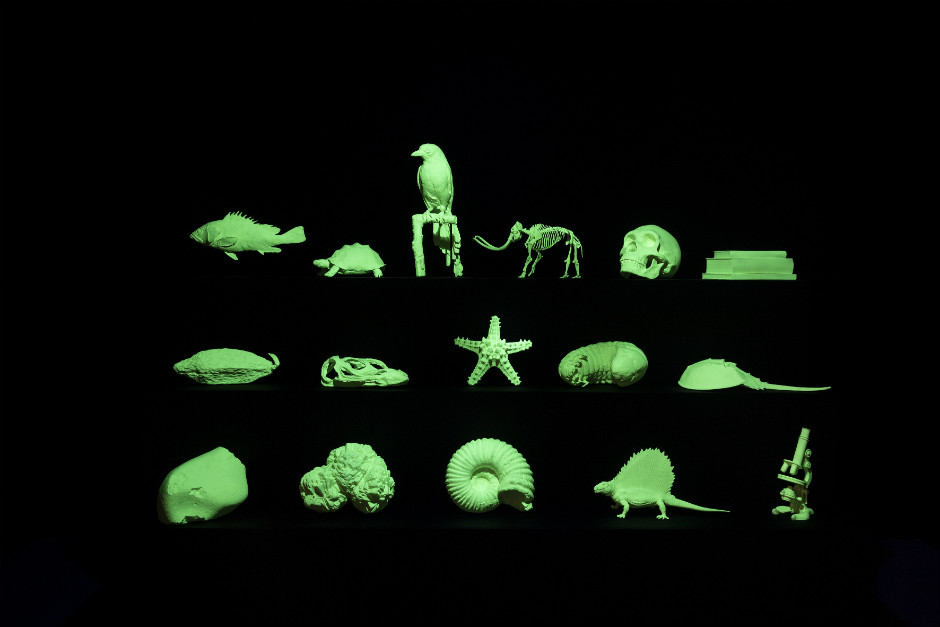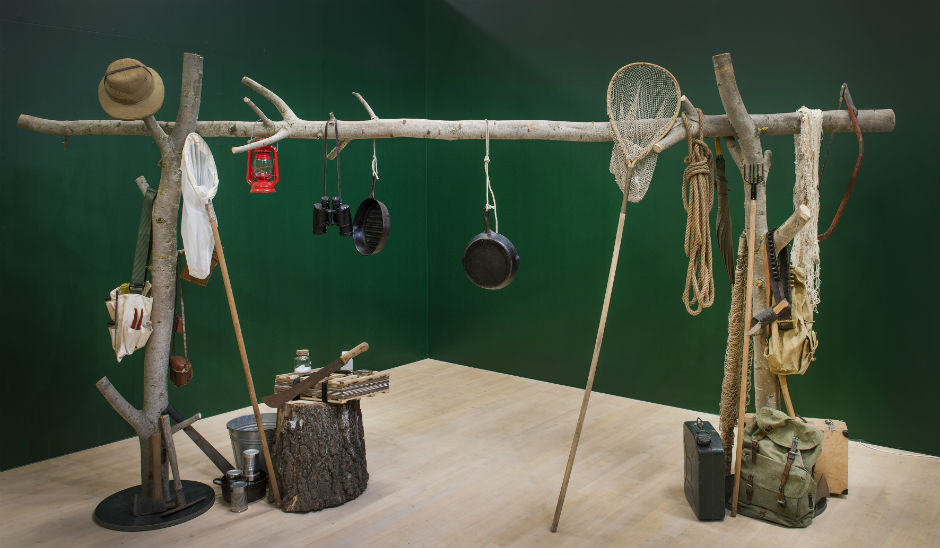Wunderkammer 2 – Mirabilia – Mark Dion
October 5 2019 – March 8 2020
Traditionally, in museum exhibitions visual art is presented in a way that is implicitly understood, a way in which art is isolated from other areas of knowledge and experience. This is diametrically opposed to the way in which art was displayed in the wunderkammer of the 1500s and 1600s. At that time, all sorts of curiosities, naturalia, works of art, and treasures were on show together, forming a kind of microcosm which mirrored the entire world that surrounds us, the macrocosm.
Since the 1990s, Mark Dion has been engrossed by the wunderkammer, but he does not simply mime it. Instead his starting point is our human renderings, perceptions, and images of the phenomena that surround us. Through his works we are thus confronted with our own views of the world.
Mirabilia is the second of three wunderkammer projects that investigate how art may be reconnected with the realm of everyday experiences and with life in general. For this innovative idea, Esbjerg Art Museum in 2017 was awarded the Vision Exhibition Award by the Bikuben Foundation.
Find the booklet here.
ABOUT THE WUNDERKAMMER PROJECT:
The aim:
The aim of the project is to develop a new exhibition format. Often art is presented and experienced as something external from life. In this project, however, we want to develop an exhibition form which adresses it’s audience in such a way that it will have an impact on their lives. Nothing less.
The concept ’Wunderkammer’ has its origins in a time before we divided different subjects as eg. humanities and science into different fields of interest and research, and before we developped the taxonomies that we today take for granted and use to structure and understand the world.
It’s our thesis that the chaotic and inhomogene presentation which characterizes the Wunderkammer, can provoke the visitors’ curiosity and encourage them to explore the art pieces in the exhibitions. It is also our thesis that it will lead to a personal and strong experience with art that might find an echo in every aspect of human life.
The exhibitions:
Wunderkammer 1 (autumn 2018). Chaotic theory and fluid dynamics will be used as the basic principle for organizing this first exhibition. Art pieces will be juxtaposed with or even integrated in laboratory set ups and scientific experiments. Partner: Professor in science (physics) at DTU Cph Tomas Bohr.
Wunderkammer 2 (autumn 2019). Combining scientific taxonomic methods with a subjective artistic gaze this second exhibition will involve the viewer as co-creative and transform the exhibition area into a total installation – an art piece in its own right. Partner: Mark Dion, USA
Wunderkammer 3 (spring 2021). Returning to ancient times and the fundamental conditions for human existence contemporary art works, created for this third Wunderkammer exhibition, will be presented together with archaeological and palaeontological findings. Partner: professor Eske Willerslev and assistant professor Martin Sikora, Centre for GeoGenetics, University of Copenhagen.
The research:
The research will take place at four levels:
Our three partners will unfold their area of research in each show respectively.
Assistant professor in psychology, Bjarne Sode Funch (RUC) will together with the museum’s director study what the museum visitors gain from this new exhibition format.
Assistant professor in art history, Rune Gade (University of Copenhagen) will analyse the exhibitions from a semiotic and museological perpective.
The museum’s international team of resaerchers will respond to each exhibition and all the data.





